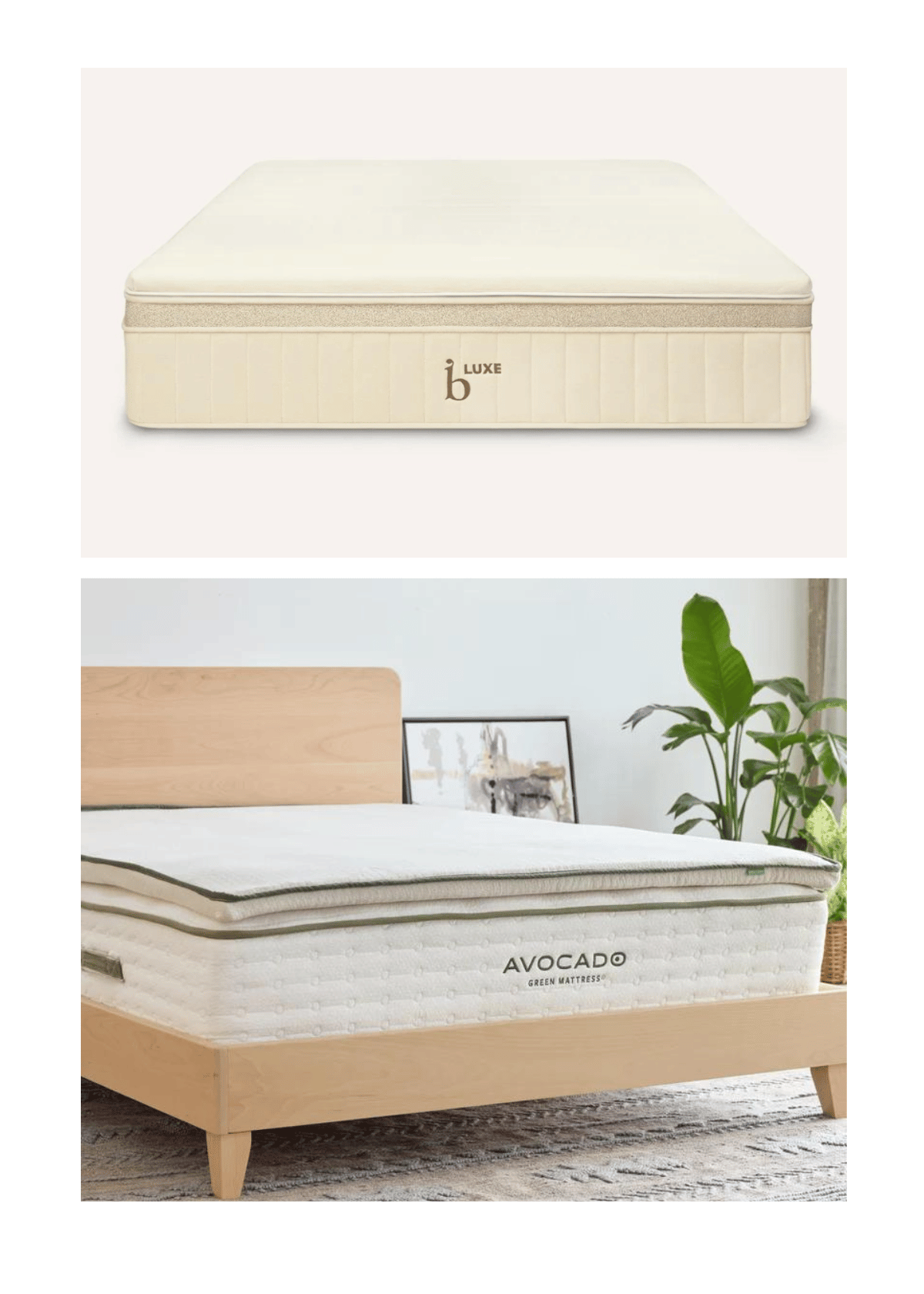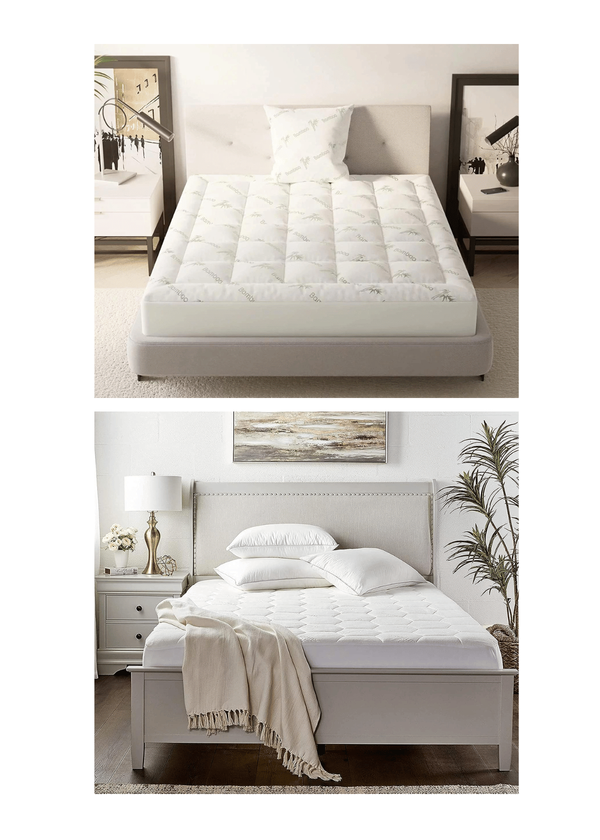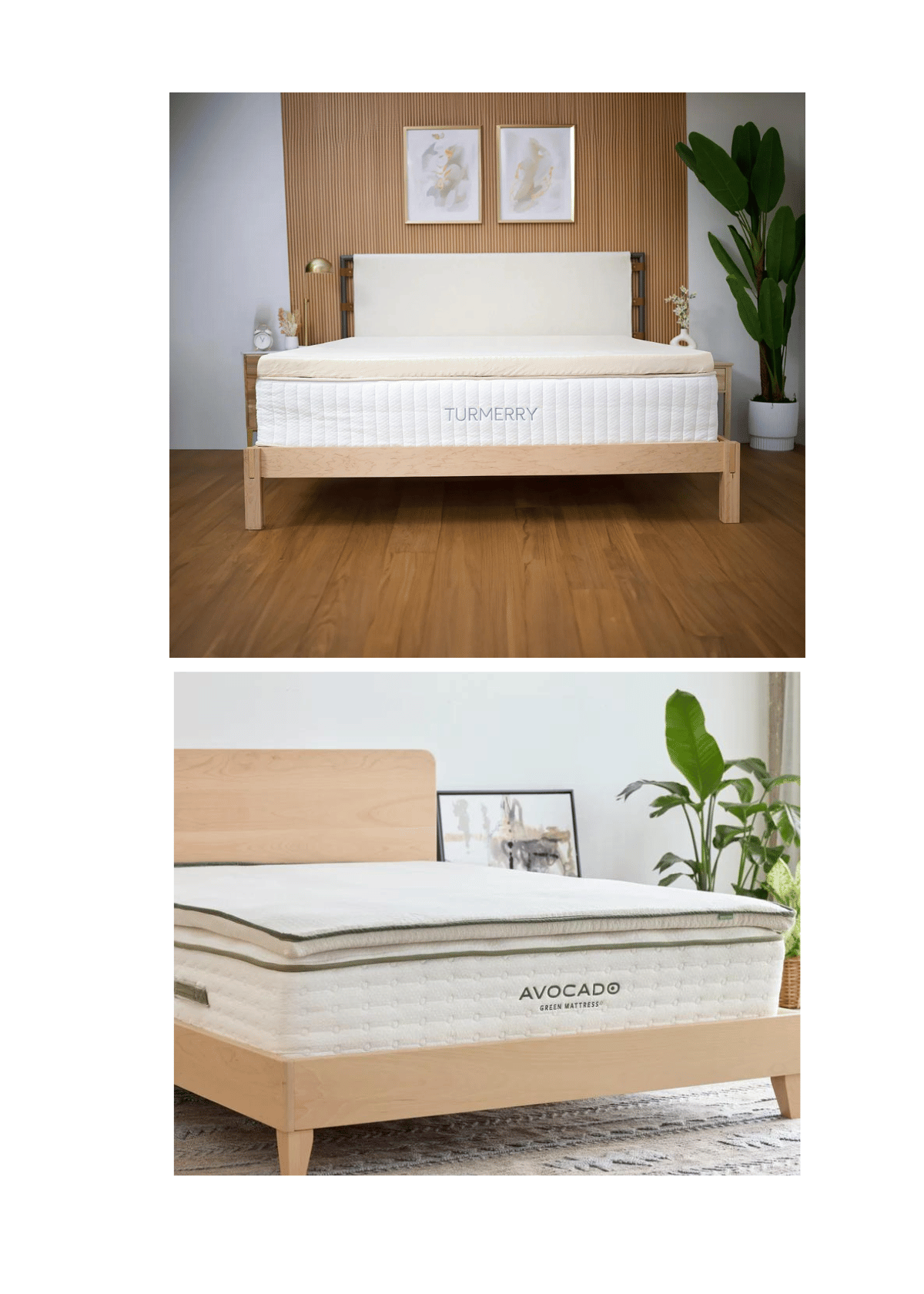(Last Update: 04/20/2025)
Have you ever noticed that your mattress seems different after being stored? Maybe it's lost its firmness or even has an odd odor?
Properly storing your mattress can significantly affect its longevity, comfort, and overall health. Improper mattress storage can shorten a mattress's lifespan by several years.
Imagine preserving the luxurious feel of your mattress for years, ensuring you get that perfect night's sleep every time.
With the right storage techniques, you can maintain your mattress in top-notch condition, ensuring it's as comfortable and fresh as the day.
Dive into our comprehensive guide on the best solutions for storing a mattress, filled with expert tips and care advice to keep your bed in its prime.
The Best Pre-Storage Cleaning Tips
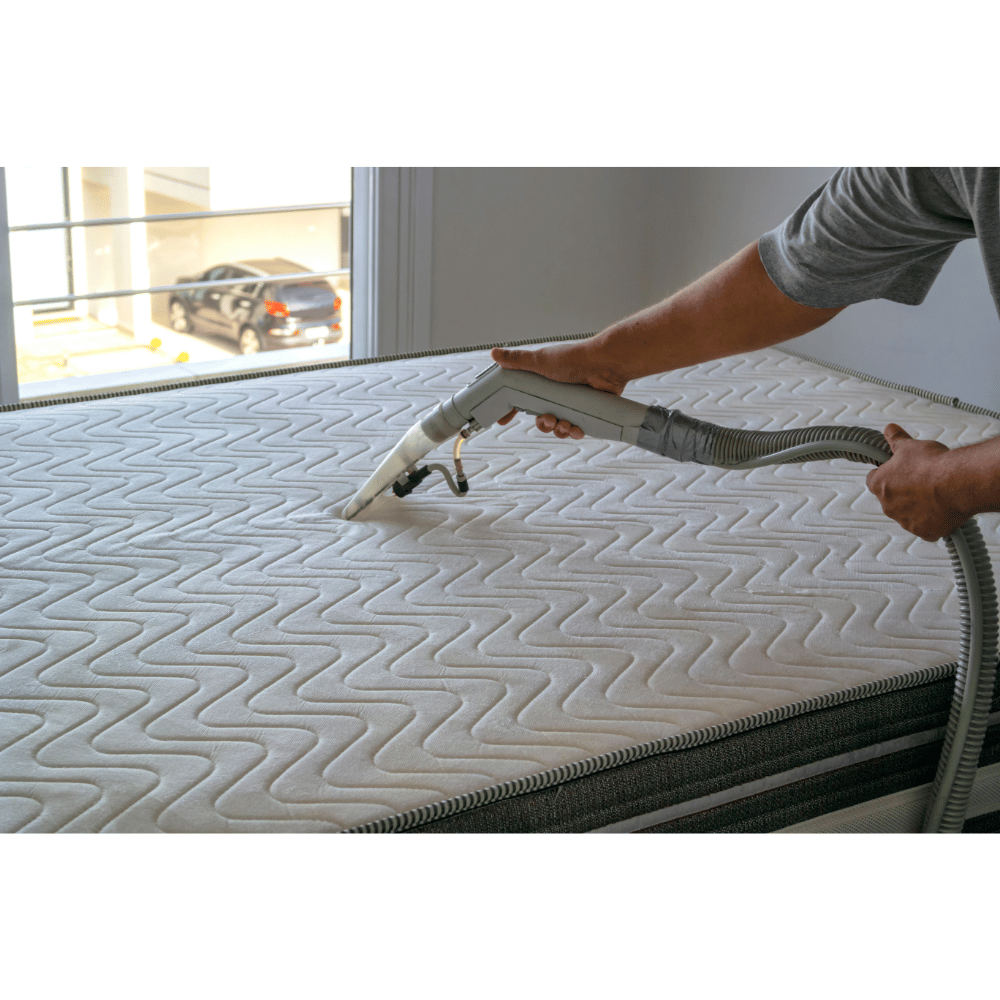
Before tucking away your mattress for storage, it's crucial to ensure it's pristine.
A clean mattress prevents odors, wards off pests, and prevents mold, too. Here are the best pre-storage cleaning tips:
- Vacuum: Start by vacuuming both sides. Use an upholstery attachment to remove dust, dead skin, and potential allergens.
- Spot Clean Stains: Accidents happen! Use a mild detergent mixed with water, whether a spilled drink or a sweat stain. Dab, don't rub to lift the stain gently.
- Deodorize: Sprinkle baking soda over the mattress surface. Let it sit for a few hours, then vacuum. This natural method absorbs odors.
- Air It Out: Before using plastic wrap, allow your mattress to breathe outdoors on a dry day or in a well-ventilated and proper mattress storage location to ensure any residual moisture evaporates.
- Check for Pests: Ensure no signs of bed bugs or mites exist. If found, consider a professional cleaning.
Choosing the Right Mattress Cover
Selecting an appropriate cover is essential for protecting your mattress from potential damage during storage. Here's how to choose the best:
Material Type: Opt for breathable materials like cotton or polypropylene. Avoid plastic covers as they can trap moisture.
- Zipped Covers: These provide all-around protection. Ensure the zipper is of high quality to prevent any unwelcome pests.
- Waterproof Qualities: Consider a waterproof cover for security against accidental spills.
- Size & Fit: A cover should fit snugly around your mattress. Too loose, and it might not offer ample protection; too tight, it could strain the mattress.
Durability: Ensure the cover is durable and tear-resistant, especially if you plan to store the mattress for an extended period.
While breathable plastic covers are commonly used, it's essential to ensure they don’t trap moisture, which can lead to mold. If storing for a long period, consider covers that allow the mattress to breathe while preventing particles and pests from settling in.
Before storing, clean your dirty mattress with an upholstery cleaner. For hybrid mattress types, ensure thorough drying. Use mattress bags to keep the mattress protected. Seal with duct tape.
Storing a Mattress Flat vs. On Its Side
When storing a mattress, positioning plays a significant role in maintaining its structure and comfort. Here are the pros and cons of the two primary methods:
Flat Storage Unit:
Pros:
Preserves the natural shape; weight is evenly distributed, preventing sagging or deformities.
- Cons: Requires more floor space, which may not be feasible in a smaller storage unit.
- On Its Side:
- Pros: A Place-saver, allowing for more room in storage areas.
- Cons: Long-term vertical storage can cause materials to settle, leading to lumps or unevenness.
Storing on its Side: Short-term Solutions
While keeping a mattress on its side can be a location-saving option, it should only be done for short periods. Extending sideways can damage the inner workings and compromise the mattress's comfort level.
Before moving, properly store your spring mattress by completely covering it with a mattress storage bag.
For additional protection, use plastic wrapping. If you plan to use a pickup truck, ensure the interior is suitable for storing items. A covered moving truck is a better option. Sprinkle baking soda on the mattress topper to keep it fresh.
Space-Saving Storage Solutions
Maintaining a mattress in a safe place without compromising on storage space can seem challenging, but with the right solutions, it becomes effortlessly manageable. Here are some efficient stowage strategies:
Under-Bed Storage Boxes:
- Designed to fit snugly beneath beds, these boxes can house foldable mattresses or mattress toppers, keeping them accessible yet out of sight.
Vacuum Seal Bags For a Memory Foam Mattress:
- Removing air drastically reduces the mattress's size, which is especially useful for foam or memory foam mattresses. Ensure they are re-inflated gently to avoid damage.
Loft or Attic Storage:
- Transform unused overhead spaces into places where the mattress will be. Just ensure they're free from dampness and pests.
Wall-Mounted Racks:
- Some innovative designs allow mattresses to be stored vertically against walls, with protective barriers to prevent damage.
Storage Units and Storage Facilities:
If on-site solutions aren't feasible, consider renting a climate-controlled storage unit specifically designed for mattresses.
Considering storage facilities, l is an excellent choice. A climate-controlled storage unit maintains an optimal temperature and prevents humidity levels that can harm the mattress's materials.
Proper Storage of Different Types of Mattresses
Storing mattresses properly depends on the type of mattress. Here are some guidelines for storing different types of mattresses to ensure they remain in good condition:
Innerspring Mattresses:
- Bag and Wrap: Use a mattress bag to protect your mattress from dirt and moisture. Wrapping it with a plastic sheet adds extra protection.
- Flat Storage: Store the mattress flat on the ground to prevent the coils inside from becoming misshapen and to avoid premature sagging.
Memory Foam Mattresses:
- Ventilation: Before storing, let your memory foam mattress breathe for several hours to ensure it’s completely dry, preventing mold growth.
- Bag and Wrap: Use a mattress bag and plastic wrap for protection.
- Flat or Upright: Memory foam can be stored flat or upright, but flat storage is the best choice to maintain its shape.
Latex Mattresses:
- Dry Thoroughly: Latex is susceptible to mold, so make sure it’s completely dry.
- Bag and Wrap: Use a mattress bag and plastic wrap.
- Flat Storage: Store flat on the ground to maintain its shape and structure.
Hybrid Mattresses:
- Ensure Dryness: Ensure the mattress is fully dry to prevent mold and mildew.
- Bag and Wrap: Use a mattress bag and plastic wrap for protection.
- Flat Storage: Store flat to preserve the different materials' integrity.
Air Mattresses:
- Deflate Completely: Ensure the mattress is fully deflated.
- Fold and Bag: Fold neatly and store in a bag to prevent punctures.
- Cool, Dry Place: Store in a cool, dry location, as garages tend to be less suitable due to potential moisture.
Key Points for All Mattresses:
Clean Thoroughly: Clean your mattress by vacuuming and spot cleaning before storage.
Cool, Dry Environment: The best place to store items, including mattresses, is in a cool, dry space to prevent mold and mildew.
Avoid Heavy Objects: Do not place heavy household items on your mattress to avoid damage.
Maintaining Mattress Freshness
To maintain the freshness of your mattress, allow it to breathe for several hours before wrapping it. This step ensures any residual moisture evaporates, preventing mold and mildew.
Secure your mattress with a plastic sheet inside a mattress bag for additional protection. The best way to store your mattress is flat on the ground, avoiding placing heavy objects on one side to maintain its shape and longevity.
Avoiding Potential Storage Pitfalls
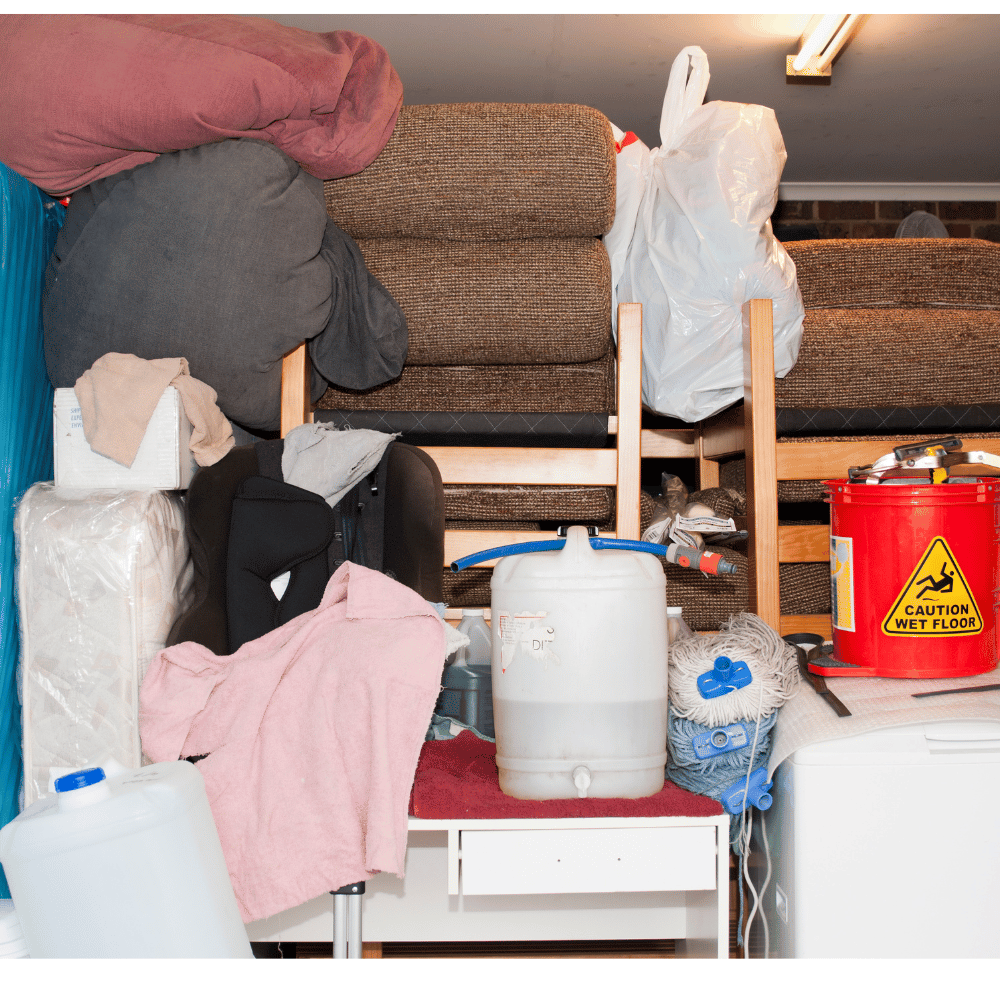
Keeping your mattress seems straightforward, but certain pitfalls can compromise its longevity and comfort. Here's what to watch out for:
Moisture Accumulation:
Never store a mattress damp. Please make sure it's thoroughly dry to prevent mold and mildew growth.
Pest Infestation:
Check the areas where the mattress will be for signs of pests. Use protective covers and avoid storing directly on the ground.
Poor Airflow Circulation:
The spaces should be well-ventilated. Lack of air movement can result in odors and mold growth.
Direct Sunlight:
Prolonged exposure to UV rays can degrade the mattress materials. Please remember to put it near windows or open areas.
Weight Stacking:
Don't place heavy items on a stored mattress. This can lead to deformities and uneven pressure points.
Flimsy Covers:
Using thin or torn covers can expose the mattress to dirt, dust, and damage.
Please keep your mattress clean when stored to ensure a good night's sleep.
Fully cover latex mattresses and avoid placing heavy objects on top of them. Don't stack mattresses or keep your mattress folded. Proper care helps store your mattress effectively.
Special Tips for Storing a Toddler Mattress Properly
When storing your mattress, choose a dry space away from garages with extreme temperatures and high humidity. Wrap the mattress in plastic to protect it from dust and moisture.
Avoid storing mattresses in conditions of high humidity and extreme temperatures for long periods, as these elements can eventually damage the foam layers and compromise the mattress's integrity and comfort. Proper storage ensures the longevity and performance of your mattress.
Here are more details:
Due to their size, Toddler mattresses might tempt you to fold or roll them. However, just like larger mattress types, proper care ensures the mattress remains in prime condition.
Hygiene First:
Children can be more susceptible to allergies. Before keeping the mattress in a safe place, please make sure it is thoroughly cleaned and free from dust mites or bed bugs.
Avoid Plastic Covers:
Plastic can trap moisture and release harmful chemicals. Opt for breathable covers that protect without compromising mattress air air circulation.
Flat Location:
Given their lightweight nature, toddler mattresses can deform more easily. Store flat to preserve shape.
Long-Term vs. Short-Term Storage Recommendations
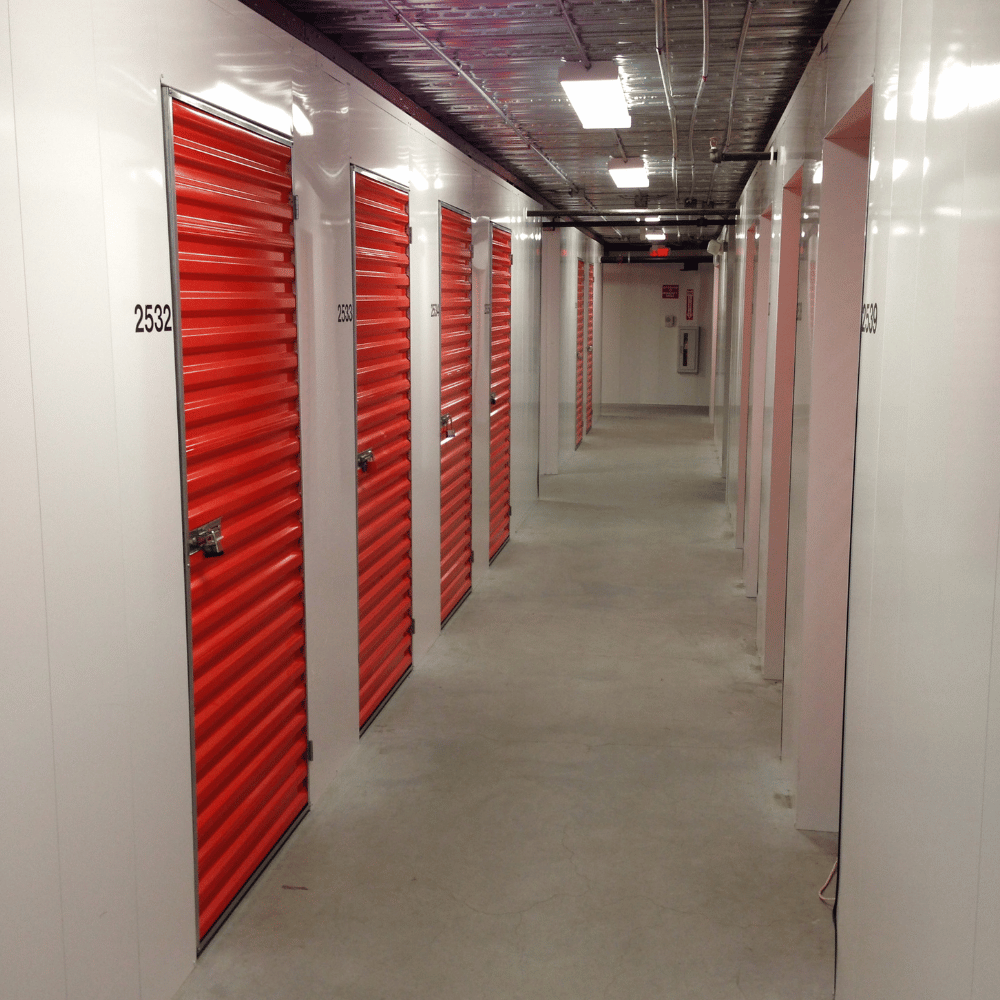
Understanding the nuances between short-term and long-term maintenance is essential whether you're storing a mattress for a few weeks or several months. Here's what to consider:
- Short-Term (Weeks to a few months):
- Positioning: Storing on its side can be suitable for saving space.
- Protection: Use a protective cover to shield from dust and spills for brief periods.
- Environment: While environmental control is ideal.
- Long-Term (Several months to years):
- Positioning: Always store flat to prevent deformities over time.
- Environmental control: Essential to prevent mold growth, material deterioration, and pest infestations.
- Routine Checks: Periodically inspect the mattress for any signs of damage or moisture.
- Rotate: Rotate the mattress every few months to distribute weight evenly.
Conclusion
Storing a mattress correctly is about more than just finding space; it's about preserving an investment in your comfort and health.
From choosing the right protective cover to understanding the nuances between short-term and long-term storage, every decision impacts the mattress's longevity and function.
Whether it's a luxurious king-size or a cozy toddler mattress, the principles remain: prioritize cleanliness, ensure appropriate positioning, and control the storage climate.
Adhering to these guidelines guarantees a fresh, supportive sleep surface that can be used whenever needed, ensuring restful nights and safeguarding dreams for years.
Frequently Asked Questions
How do you keep a mattress when not in use?
Store your mattress in a cool, dry place when not in use. Clean it thoroughly, encase it in a breathable protective plastic cover, and store it flat to preserve its shape. Ensure the storage area is free from pests and has good air circulation to prevent mold.
Is it OK to store a mattress on its side?
Storing a mattress on its side is acceptable for short durations. However, laying it flat for extended storage is best to prevent material shifting and potential deformities. Always protect it with a cover and store it in a dry, pest-free environment.
Should a mattress be stored flat?
A mattress should ideally be stored flat to maintain structural integrity and prevent material shifting. Storing flat ensures even weight distribution, helping preserve shape and structure while keeping the mattress safely supported during extended periods. Please make sure it's in a dry, well-ventilated area.
Is it better to store a mattress lying down or standing up?
It is better to keep a mattress upright and completely dry than lying flat to maintain its good shape and prevent material shifting. While standing up might save space in the short term, prolonged vertical maintenance can lead to sagging or deformities in the mattress's internal structure.




